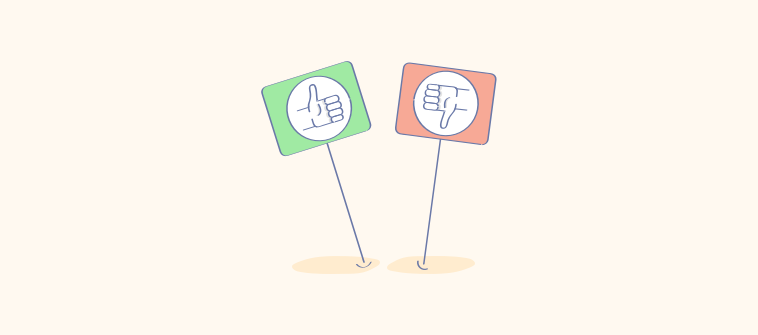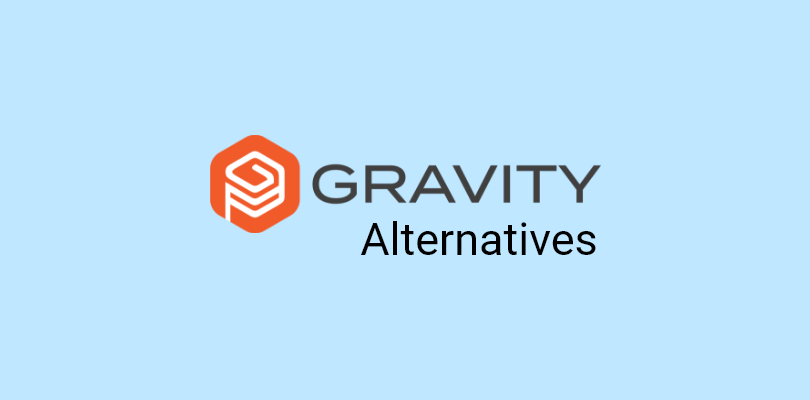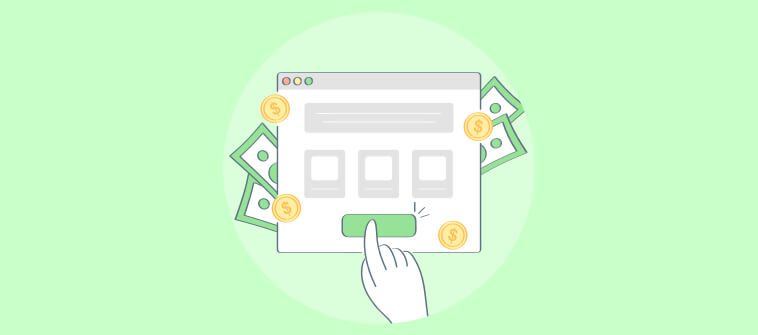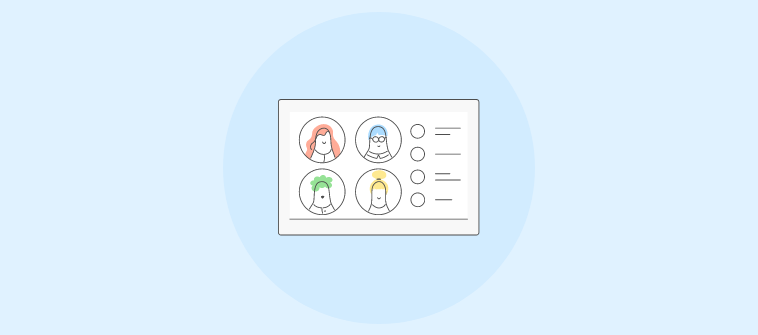
To succeed in business, you need great products, top-notch services, and a focus on making customers happy. But success isn’t just about getting there; it’s about staying there.
As markets and customers’ needs change, the businesses that keep up and keep improving are the ones that truly flourish. In this context, customer satisfaction survey can be your secret weapon. They’re a reliable way to know what your customers want and turn them into supporters of your brand.
But remember, it’s not just about asking questions—it’s about asking the right questions. In this blog, we’ll share a list of essential customer satisfaction questions to help you connect better with your customers and keep your business growing.
Watch: How to Create a Customer Satisfaction Survey
Types of Customer Satisfaction Surveys
Measuring customer satisfaction is crucial for businesses to understand how well they are meeting customer expectations and to identify areas for improvement.
There are several key metrics and methods for measuring customer satisfaction through surveys:
1. Net Promoter Score (NPS)
NPS is a widely used metric that assesses customer loyalty and the likelihood of recommending a company’s products or services to others.
Survey question: “On a scale of 0 to 10, how likely are you to recommend our company/product/service to a friend or colleague?”
Promoters (score 9-10), Passives (score 7-8), and Detractors (score 0-6) are categorized, and the NPS is calculated as the percentage of Promoters minus the percentage of Detractors.
Net Promoter Score: The Ultimate NPS Survey Guide for Growth
2. Customer Satisfaction Score (CSAT)
CSAT measures a customer’s satisfaction with a specific interaction or experience.
Survey question: “How satisfied are you with your recent experience with our company/product/service?” (usually on a scale from 1 to 5 or 1 to 7).
3. Customer Effort Score (CES)
CES assesses the ease of a customer’s experience with a particular task, such as resolving an issue or making a purchase.
Survey question: “On a scale from very difficult to very easy, how easy was it to [complete the task] with our company/product/service?”
Benefits of Customer Satisfaction Surveys
Customer satisfaction surveys are more than just a tool for feedback collection; they are an indispensable part of a business’s strategy to understand, engage, and retain customers.
The benefits of conducting these surveys are manifold, but let us take a detailed look at some of the key advantages:
Enhanced Customer Retention
One of the primary benefits of customer satisfaction surveys is their ability to aid in customer retention. By understanding the needs, preferences, and issues faced by your customers, you can take targeted actions to address concerns, improve your offerings, and ensure that your customers feel valued and understood. This not only encourages loyalty but also fosters a sense of belonging among customers, making them more likely to stick with your brand in the long run.
Informed Decision-Making
Customer feedback provides valuable insights that can guide strategic decisions. Whether it’s improving product features, tweaking services, or adjusting customer service protocols, the data gathered from satisfaction surveys offers a clear direction based on actual customer preferences and experiences. This data-driven approach minimizes guesswork and enables businesses to allocate resources more effectively, ensuring that efforts are concentrated where they can make the most impact.
Product and Service Improvement
Continuous improvement is the key to staying competitive, and customer satisfaction surveys provide direct input on where enhancements are needed. Feedback on products and services allows businesses to identify both strengths to build upon and weaknesses to address. This ongoing loop of feedback and improvement ensures that offerings evolve in line with customer expectations, enhancing overall quality and user experience.
Benchmarking Performance
Surveys allow businesses to benchmark their performance in terms of customer satisfaction against industry standards or past performance. Tracking satisfaction levels over time helps in understanding how changes in products, services, or customer service practices impact customer perception. This benchmarking is crucial for setting realistic goals and measuring progress toward enhancing customer satisfaction and loyalty.
Strengthening Customer Relationships
Asking for feedback is a gesture that shows customers you value their opinions and are committed to meeting their expectations. This can significantly strengthen the customer-business relationship, fostering trust and open communication. Customers who feel heard are more likely to have a positive perception of the brand, contribute constructive feedback in the future, and recommend the business to others.
Identifying Advocates and At-Risk Customers
Surveys can help identify not only your brand advocates but also customers who are at risk of churning. Satisfied customers can be nurtured into brand advocates, who are more likely to spread positive word-of-mouth and contribute to organic growth. Conversely, identifying dissatisfied customers early allows businesses to address their concerns proactively, potentially salvaging the relationship and avoiding churn.
Cost Efficiency
Retaining an existing customer is significantly cheaper than acquiring a new one. By investing in customer satisfaction surveys, businesses can improve retention rates, reducing the need for constant acquisition efforts. This not only saves money but also builds a stable customer base that contributes to ongoing revenue.
Customer Satisfaction Survey Questions
Here is a list of the top customer satisfaction questions you should ask your customers to gather incisive insights. Each category of questions serves a specific purpose in gathering feedback, whether it’s understanding overall satisfaction, deep-diving into industry-specific details, assessing event success, or evaluating customer support.
Crafting your survey with a mix of these categories ensures a comprehensive view of customer sentiment, allowing for targeted improvements across all aspects of your business.
1. General Satisfaction Questions
These questions gauge overall customer satisfaction with your business, product, or service, providing a broad view of customer sentiment.
Examples:
- How satisfied are you with our product/service?
- Would you recommend our company to friends or family?
- Overall, how would you rate your experience with us?
- How likely are you to purchase from us again?
- Is our product/service meeting your expectations?
- How well does our product/service meet your needs?
- Can you rate your satisfaction with our product/service on a scale of 1-10?
- What would you change about our product/service to improve it?
- How does our product/service compare to other options you’ve tried?
- Overall, are you satisfied, dissatisfied, or neutral about our product/service?
2. Industry-Specific Satisfaction Questions
Tailored to specific industries, these questions let you gather feedback on aspects unique to your sector, offering insights into specialized areas of customer experience.
For example, if you are in the restaurant industry, you can ask:
- How would you rate the quality of our food?
- Was our menu selection diverse and appealing?
- How satisfied are you with the cleanliness of our establishment?
- Rate your satisfaction with the speed of service.
- How would you rate the ambiance of our restaurant?
- Was our staff friendly and helpful?
- How likely are you to return based on our beverage selection?
- How satisfied were you with the portion sizes offered?
- Rate your overall dining experience with us.
- How well did we accommodate your dietary restrictions or preferences?
3. Event Satisfaction Questions
These questions assess attendees’ experiences at events, providing feedback on what worked well and areas for improvement.
Examples:
- How satisfied were you with the event organization?
- Was the event content relevant and engaging?
- How would you rate the venue/location of the event?
- Was the registration process easy and efficient?
- How satisfied were you with the networking opportunities provided?
- Rate the quality of speakers/presenters at the event.
- How likely are you to attend future events we organize?
- Was the event schedule well-planned and timely?
- How satisfied were you with the event’s value for the price?
- What was the most memorable part of the event for you?
4. Customer Support Satisfaction Questions
These questions focus on evaluating the effectiveness and efficiency of your customer support team.
Examples:
- How satisfied were you with the speed of our response?
- Was your issue resolved to your satisfaction?
- How knowledgeable did you find our customer support team?
- Rate your overall satisfaction with the customer support received.
- How well did our customer support understand your needs?
- Would you say our customer support was courteous and professional?
- How likely are you to seek support from us again?
- Did our customer support follow up with you as promised?
- How would you improve our customer support experience?
- Did our customer support exceed your expectations?
5. Website and Mobile App Satisfaction Questions
These questions assess user experiences with your digital platforms, identifying usability issues and areas for enhancement.
Examples:
- How easy was it to navigate our website/app?
- Did you encounter any issues while using our website/app?
- How satisfied are you with the speed of our website/app?
- How likely are you to recommend our website/app to others?
- Is there any functionality you feel our website/app is missing?
- How visually appealing do you find our website/app?
- How well does our website/app meet your needs?
- Rate the quality of content available on our website/app.
- Was it easy to find the information you were looking for on our website/app?
- How secure do you feel while using our website/app?
6. Pricing and Value Satisfaction Questions
These questions help understand perceptions of pricing relative to the perceived value of your product or service.
Examples:
- How do you perceive the value of our product/service for the price paid?
- Do you believe our product/service offers good value for money?
- Compared to our competitors, how do you rate our pricing?
- Would you consider our product/service to be a good investment?
- How satisfied are you with the pricing options available?
- Is our pricing structure clear and understandable?
- Have any pricing concerns affected your decision to purchase from us?
- How likely are you to continue purchasing from us at the current price points?
- How fair do you believe our pricing is in relation to the quality provided?
- What changes, if any, would you suggest to our pricing strategy?
7. Demographic Questions
Demographic questions collect background information about respondents, helping segment data for deeper analysis.
Examples:
- What is your age range?
- Which gender do you identify with?
- What is your highest level of education?
- What is your employment status?
- Which industry do you work in?
- What is your household income range?
- In which region or country do you reside?
- What is your marital status?
- How many people live in your household?
- What languages do you speak fluently?
8. Product Usage Questions
These questions focus on how customers use your product or service, offering insights into usage patterns and preferences.
Examples:
- How often do you use our product/service?
- What features do you use the most?
- Have you used our product/service for its intended purpose?
- What improvements would make you use our product/service more frequently?
- How easy is it to use our product/service?
- Did our product/service meet your initial expectations?
- What alternative products/services have you considered or used?
- How did you first hear about our product/service?
- Would you be interested in a tutorial or guide for our product/service?
- What other uses have you found for our product/service?
9. Quantitative Customer Feedback Questions
Quantitative questions aim to collect data that can be measured and analyzed statistically, providing objective insights into customer behavior and preferences.
Examples:
- On a scale of 1-10, how satisfied are you with our service?
- How many times have you purchased our product in the last year?
- Rate the quality of our product on a scale from 1 (Poor) to 5 (Excellent).
- How long (in minutes) did you wait for assistance?
- From 1 (Very Unlikely) to 10 (Very Likely), how likely are you to recommend our business to others?
10. Follow-up Questions
Follow-up questions delve deeper into responses given to previous questions, seeking clarification or additional detail.
Examples:
- You mentioned you were dissatisfied with our service. Can you explain why?
- You rated our product quality highly. What aspects of the product contributed to this rating?
- You indicated you’re unlikely to recommend us. What changes could we make to improve?
- You reported a long wait time for assistance. How did this affect your overall experience?
- After choosing our highest pricing tier, did it meet your expectations? Why or why not?
11. Binary Questions
Binary questions offer a straightforward choice between two options, typically “Yes” or “No,” making them simple for respondents to answer and easy for researchers to analyze.
Examples:
- Have you previously purchased products from our website?
- Are you satisfied with your purchase?
- Would you consider using our service again in the future?
- Did you find our website easy to navigate?
- Is our product pricing clear and understandable?
- Did our customer service resolve your issue satisfactorily?
- Would you recommend our product to a friend?
- Have you downloaded our mobile app?
- Are you interested in receiving promotional emails from us?
- Did you experience any issues during the checkout process?
12. Multiple Choice Questions
Multiple choice questions provide several options, allowing respondents to select the one that best aligns with their view or experience. They can offer more nuanced insights than binary questions.
Examples:
- What is your primary reason for visiting our website today? (Research, Purchase, Customer Service, Browsing)
- How often do you use our product or service? (Daily, Weekly, Monthly, Rarely)
- What is your primary reason for choosing our product? (Options: Quality, Price, Features, Recommendations)
- Which of our services do you use most frequently? (Options: Service A, Service B, Service C, Service D)
- How did you hear about us? (Options: Social Media, Word of Mouth, Advertisement, Other)
- What age group do you belong to? (Options: Under 18, 19-29, 30-39, 40-49, 50+)
- What factor is most important to you when making a purchase? (Options: Price, Quality, Brand, Reviews)
13. Open-ended and Long-form Questions
Open-ended questions allow respondents to answer in their own words, providing qualitative insights that can reveal nuanced opinions and suggestions.
Examples:
- What do you like most about our product or service?
- How can we improve your experience with our company?
- Describe a time you were particularly satisfied or dissatisfied with our service.
- What additional features would you like to see in our product?
- Share any additional comments or suggestions you have for us.
14. Nominal Scale Questions
Nominal scale questions classify responses into non-ordinal categories without implying any order or rank among them, often used for segmentation or classification.
Examples:
- What is your gender? (Options: Male, Female, Prefer not to say)
- Which category best describes your employment status? (Options: Employed, Self-employed, Unemployed, Student, Retired)
- What is your preferred method of communication? (Options: Email, Phone, Text, Social Media)
- What type of device are you using? (Options: Desktop, Laptop, Tablet, Smartphone)
- What is your marital status? (Options: Single, Married, Divorced, Widowed)
- Which browser do you use most frequently? (Options: Chrome, Firefox, Safari, Edge, Other)
- What is your highest level of education? (Options: High School, Undergraduate, Graduate, Postgraduate)
- Which operating system is on your primary device? (Options: Windows, macOS, Linux, Android, iOS)
- In which industry do you work? (Options: Technology, Education, Healthcare, Retail, Other)
- What was the purpose of your visit today? (Options: Browse, Purchase, Research, Support)
15. Ordinal Scale Questions
Ordinal scale questions ask respondents to rank their responses according to a hierarchical scale, indicating order or preference.
Examples:
- Rank your preference for the following features (1 being most preferred): Speed, Durability, Price, Design.
- How would you rank your overall satisfaction with our service? (Very Unsatisfied, Unsatisfied, Neutral, Satisfied, Very Satisfied)
- In order of importance, what factors influence your purchase decision? (Quality, Price, Brand Reputation, Reviews)
- Rank these aspects of our website from easiest to use to hardest to use: Navigation, Checkout Process, Product Search, and Customer Support.
- How do you prioritize these elements when choosing a product? (Performance, Aesthetics, Functionality, Brand)
16. Likert Scale Questions
Likert scale questions measure the intensity of respondents’ feelings towards a statement, offering a range of agreement or disagreement.
Examples:
- I am satisfied with the quality of the product. (Strongly Disagree, Disagree, Neutral, Agree, Strongly Agree)
- The customer service was responsive to my needs. (Strongly Disagree, Disagree, Neutral, Agree, Strongly Agree)
- I found the website easy to navigate. (Strongly Disagree, Disagree, Neutral, Agree, Strongly Agree)
- I believe the price of the product is fair. (Strongly Disagree, Disagree, Neutral, Agree, Strongly Agree)
- I would recommend this service to others. (Strongly Disagree, Disagree, Neutral, Agree, Strongly Agree)
17. Semantic Differential Questions
Semantic differential questions ask respondents to rate a product, service, or brand between two opposite adjectives, capturing feelings and attitudes.
Examples:
- How would you describe our product? (Cheap – Expensive)
- Rate your experience with our customer service. (Unfriendly – Friendly)
- How do you find the usability of our app? (Complicated – Simple)
- Describe the atmosphere of our store. (Unwelcoming – Welcoming)
- Evaluate the reliability of our delivery service. (Unreliable – Reliable)
18. B2B (Business-to-Business) Questions
B2B questions are designed for companies that sell products or services to other businesses. These questions often focus on understanding the needs, challenges, and decision-making processes of business clients, with an emphasis on long-term relationships and ROI.
Examples:
- How does our product/service align with your business goals?
- What is your primary objective in using our product/service?
- How satisfied are you with the level of support and communication from our team?
- What challenges does your business face that our product/service helps to solve?
- Can you describe the decision-making process for purchasing our product/service?
- How likely are you to recommend our product/service to other businesses?
- What features do you value most in our product/service?
- How do you measure the success or ROI of our product/service?
- What improvements would you like to see in our product/service?
- Are there any additional services or features you wish we offered?
19. B2C (Business-to-Consumer) Questions
B2C questions are tailored for companies that sell directly to consumers. These questions typically explore individual preferences, satisfaction levels, and purchasing behavior, focusing on personal value and experience.
Examples:
- How satisfied are you with your recent purchase from us?
- What influenced your decision to buy our product/service?
- How would you rate the quality of our product/service?
- Did you find our website easy to use when making your purchase?
- How likely are you to purchase from us again in the future?
- What do you think of our product/service pricing?
- Were you able to find all the information you needed about our product/service?
- How satisfied were you with the customer service you received?
- Would you recommend our product/service to friends or family?
- Is there anything we could do to improve your shopping experience?
Ready-to-Use Free Survey Templates
Here are some free, readymade customer satisfaction survey templates for your use. You can use them as they are or customize them according to your requirements!
1. Customer Satisfaction Survey
This is a general survey used to gauge the overall satisfaction levels of customers regarding a product, service, or experience provided by a company. It typically covers various aspects such as product quality, customer service, ease of use, and overall experience.
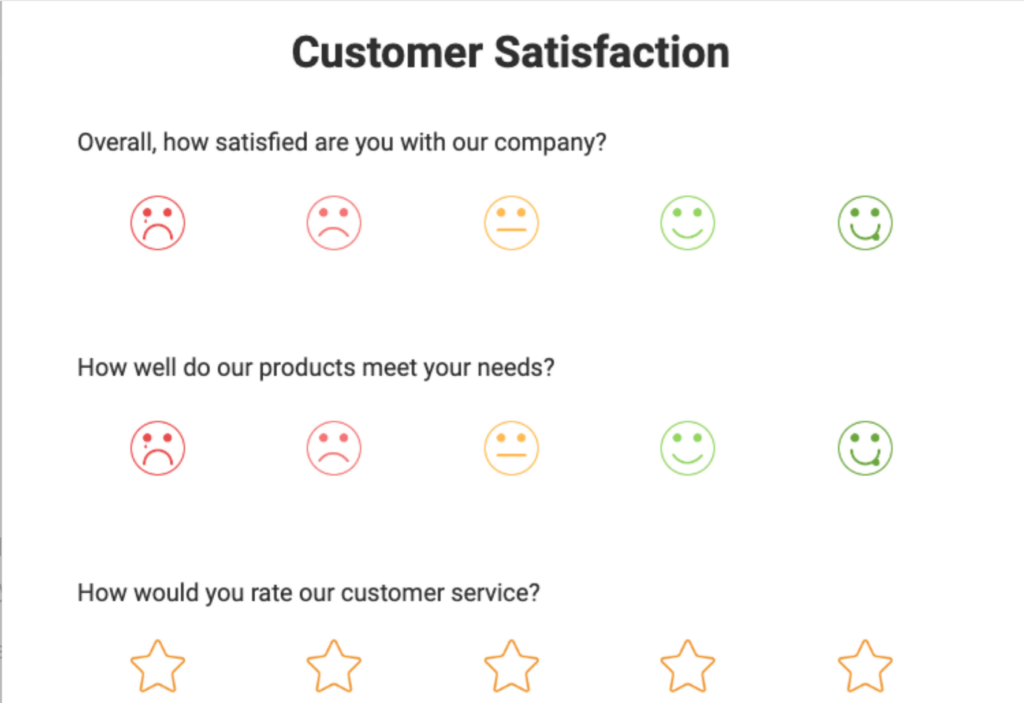
2. Customer Satisfaction NPS (Net Promoter Score)
This survey template assesses customer loyalty and their likelihood of recommending a product or service to others. It typically includes the NPS question (“How likely are you to recommend [company/product/service] to a friend or colleague?”) followed by an open-ended question for feedback.
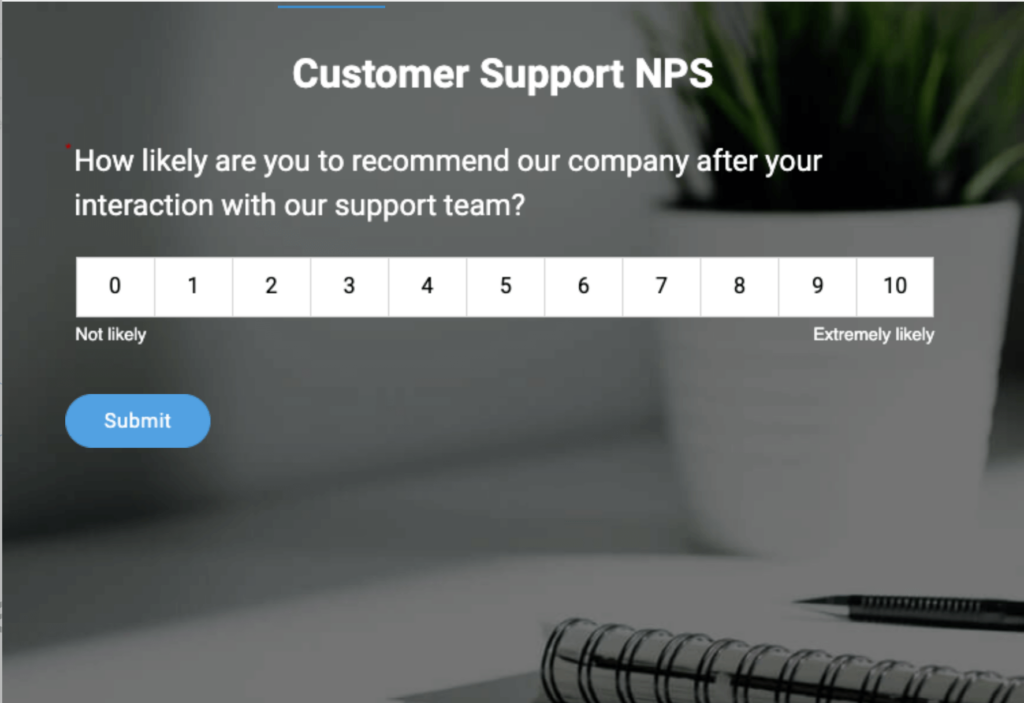
3. Product Satisfaction Survey
This template specifically targets customers’ satisfaction with a particular product. It may include questions about product features, functionality, performance, and overall satisfaction.
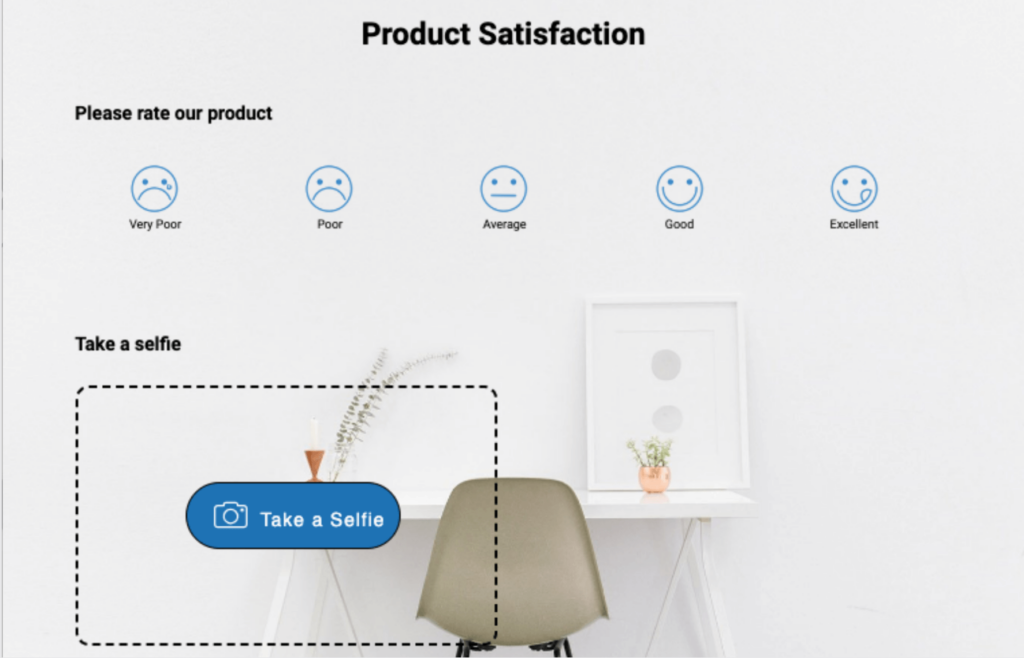
4. Rating Survey
A rating survey template collects ratings on specific aspects of a product, service, or experience. It could be used to rate customer service, product quality, website usability, or any other relevant metric using a numerical scale.

5. Trial Feedback
This template is used to gather feedback from customers who have recently tried a product or service for the first time. It helps understand initial impressions, areas of improvement, and factors influencing future adoption or purchase decisions.
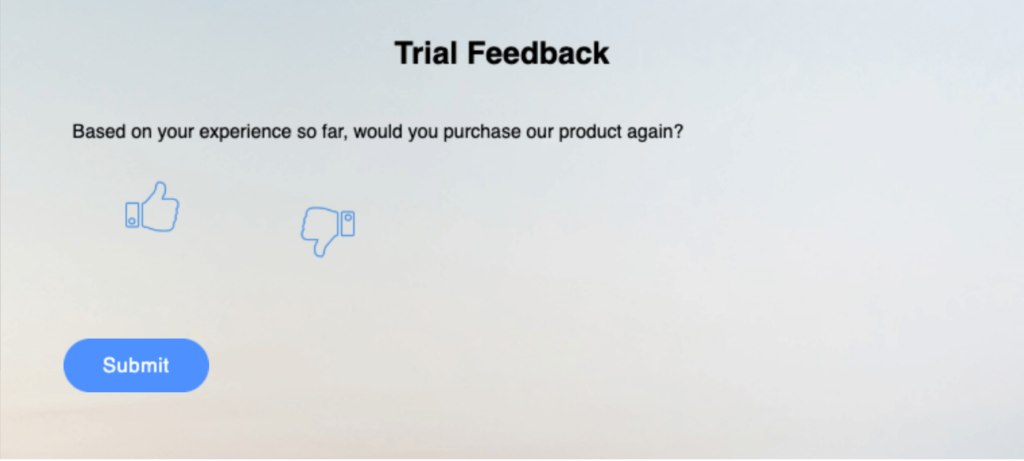
6. Auto Purchase/Lease Satisfaction
This template has questions tailored for customers who have recently purchased or leased a vehicle. It covers aspects such as the buying/leasing process, vehicle performance, dealership experience, and overall satisfaction.
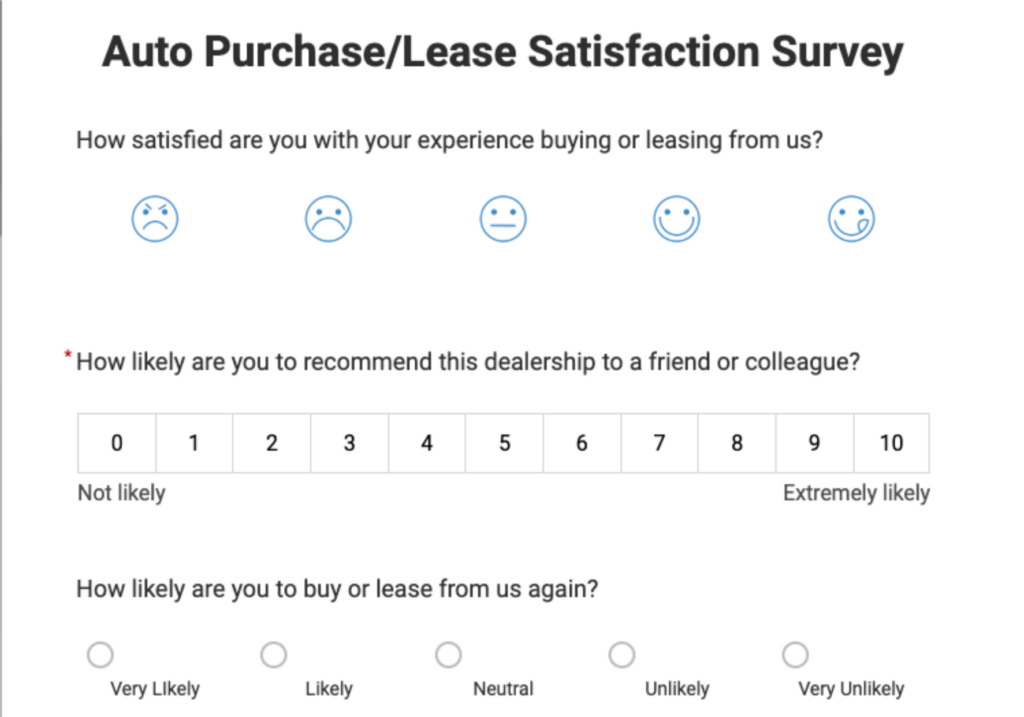
7. Restaurant Satisfaction Survey
The questions in this template focus on customers’ experiences at restaurants, including food quality, service speed, cleanliness, ambiance, and overall satisfaction.
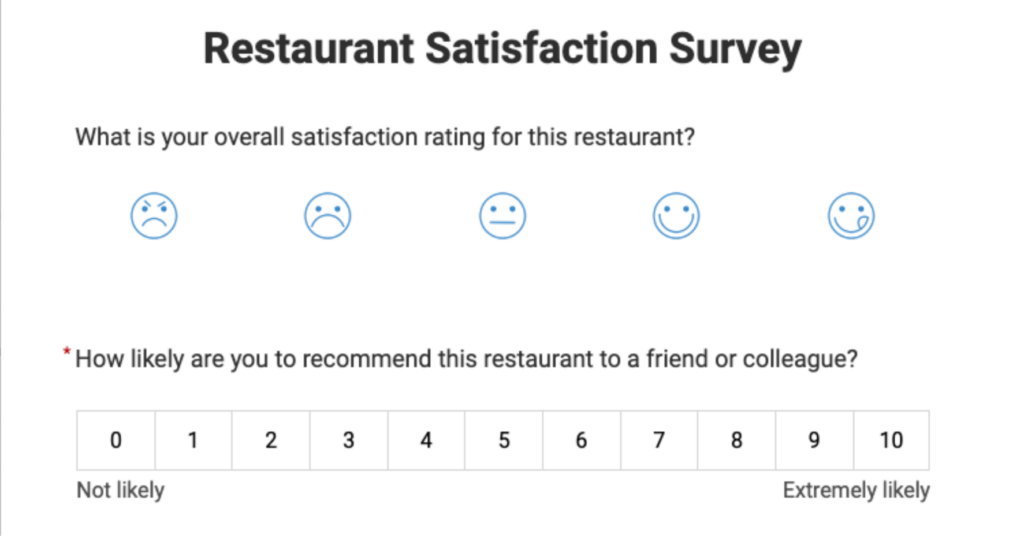
8. Bank Customer Satisfaction
This is specifically designed to assess customer satisfaction levels with banking services, including account management, customer service, loan processes, and overall banking experience.
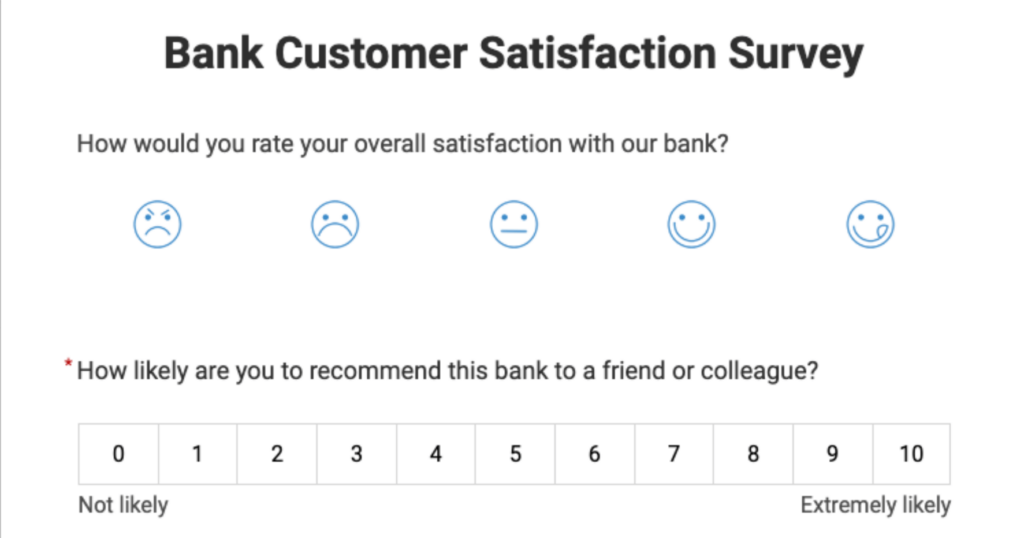
9. Health/Leisure Facility Satisfaction
This template targets customers’ satisfaction with health clubs, gyms, spas, or leisure facilities. It may inquire about facility cleanliness, equipment quality, staff friendliness, and overall satisfaction with the services provided.
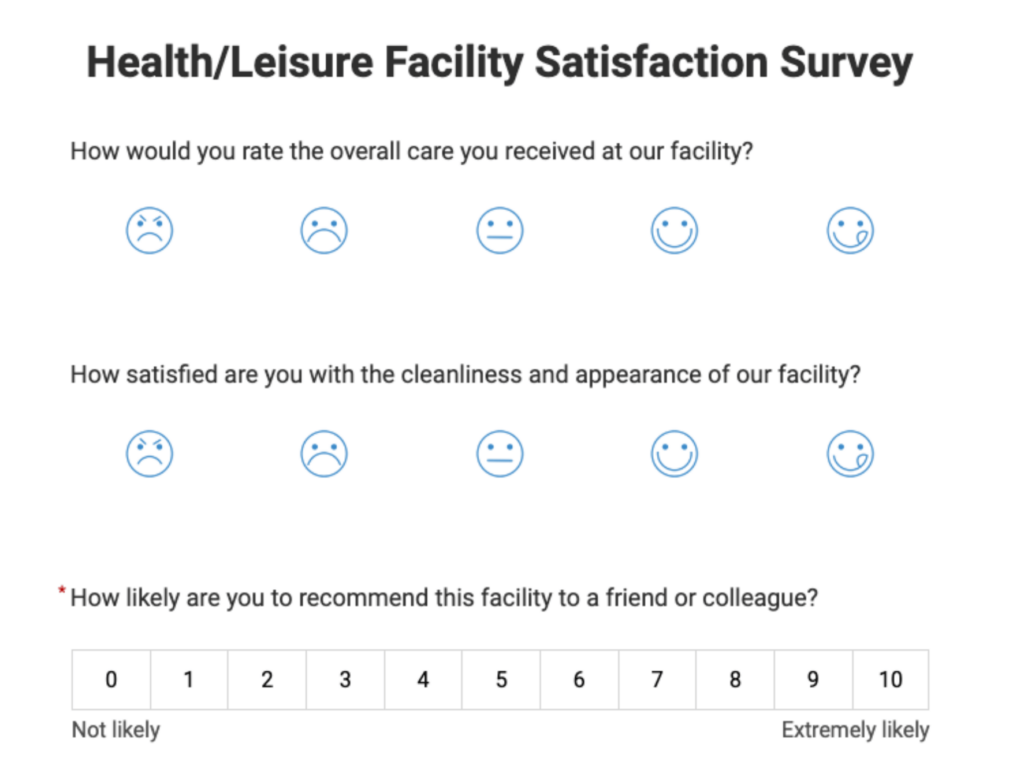
10. Retirement Home Resident Satisfaction
This template is aimed at residents of retirement homes to evaluate their satisfaction with living conditions, staff support, recreational activities, meal quality, and overall experience.
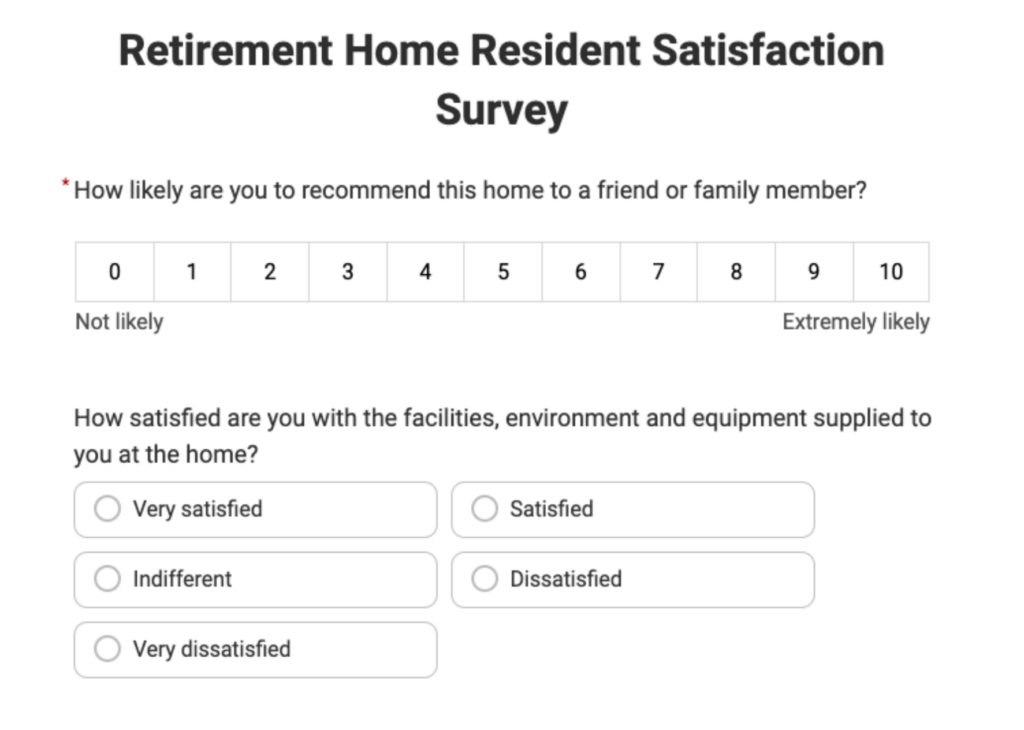
11. Website Satisfaction
This template focuses on users’ satisfaction with a website’s design, navigation, content relevance, functionality, and overall user experience.
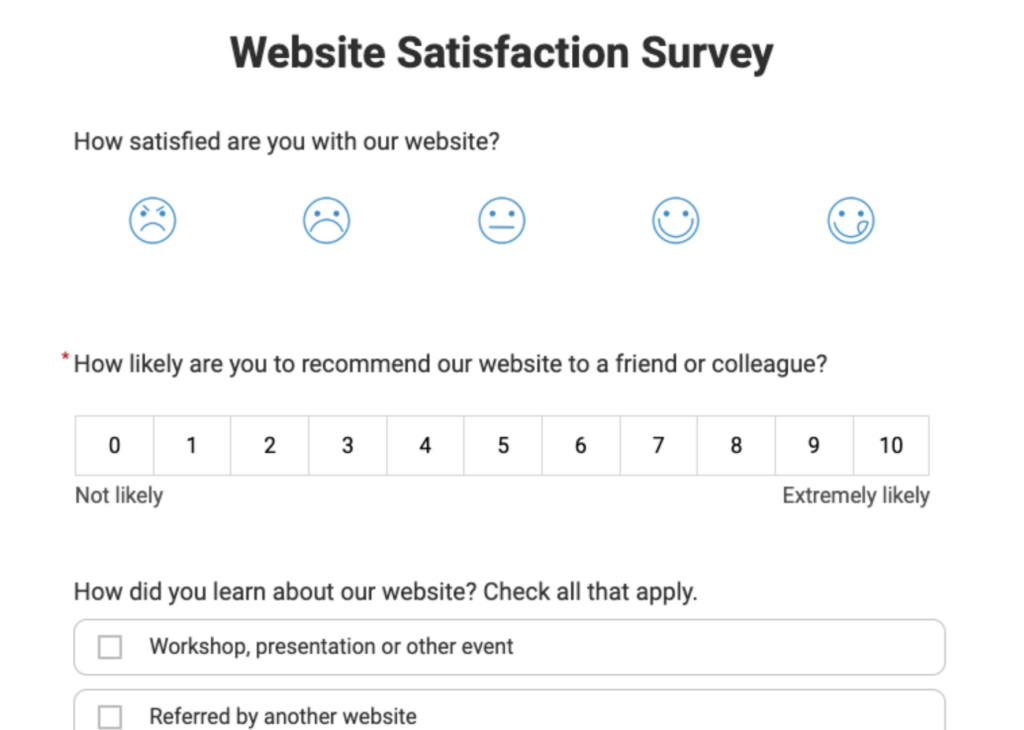
12. Hospital Evaluation
This template assesses patients’ satisfaction with hospital services, including medical care, nursing support, facility cleanliness, waiting times, and overall hospital experience.
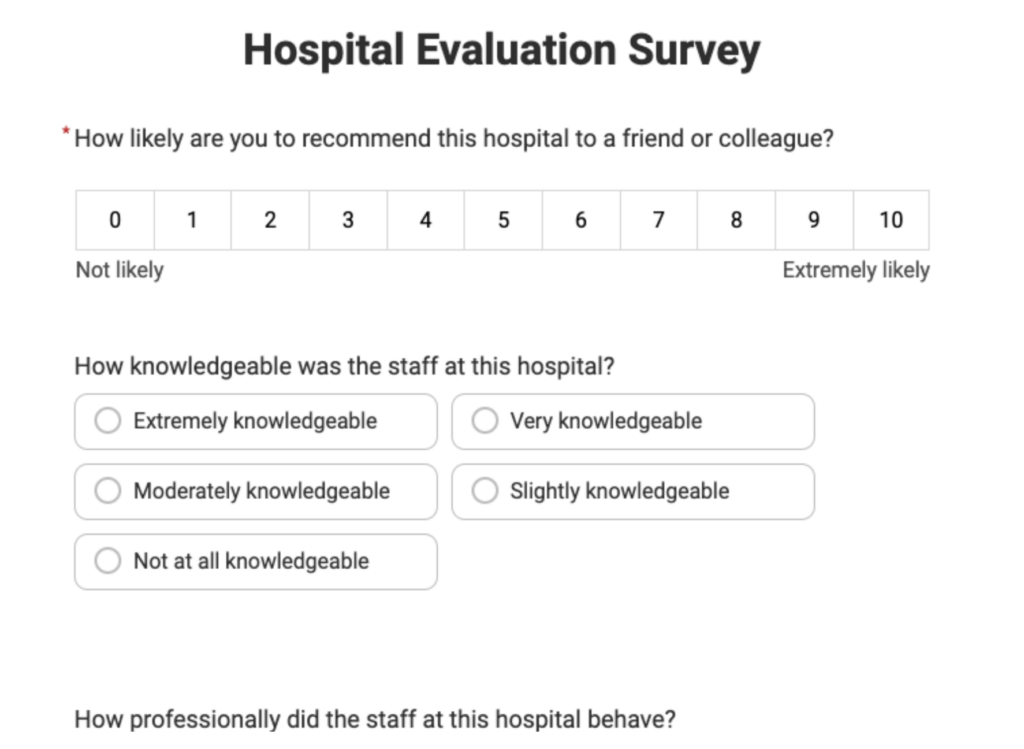
13. Quality Assurance
This survey is used internally to assess and maintain quality standards within a company’s products, services, or processes. It may involve questions related to adherence to quality guidelines, process efficiency, and areas for improvement.
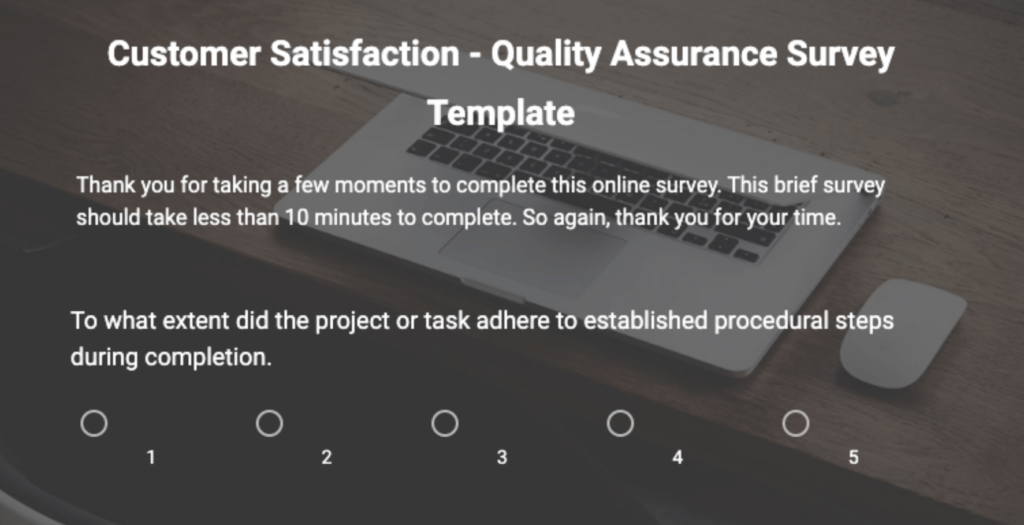
14. Project Satisfaction
This survey evaluates stakeholders’ satisfaction with a specific project, including project management, communication, deliverables, and overall project outcomes.
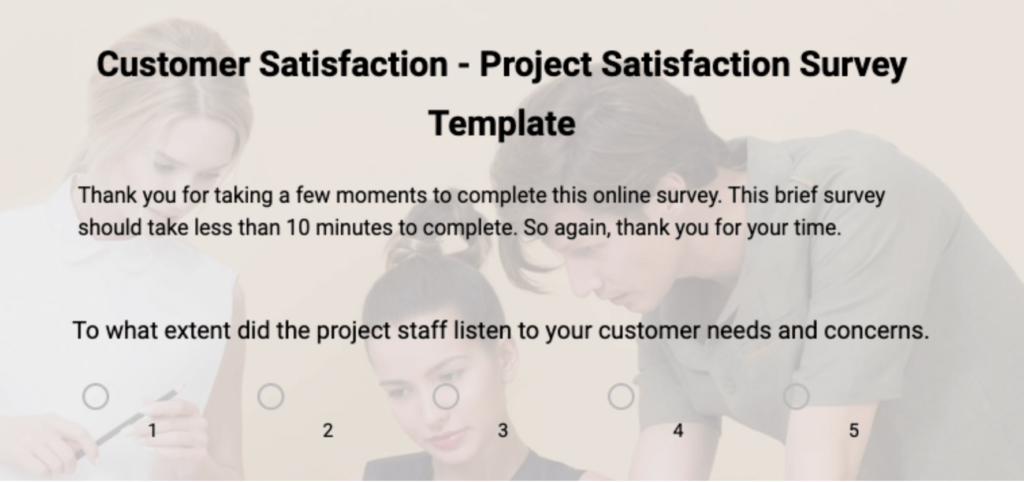
15. Client Satisfaction Survey
Similar to a general customer satisfaction survey, it is specifically tailored for company clients. It could include questions about client relationships, service delivery, responsiveness, and overall satisfaction.
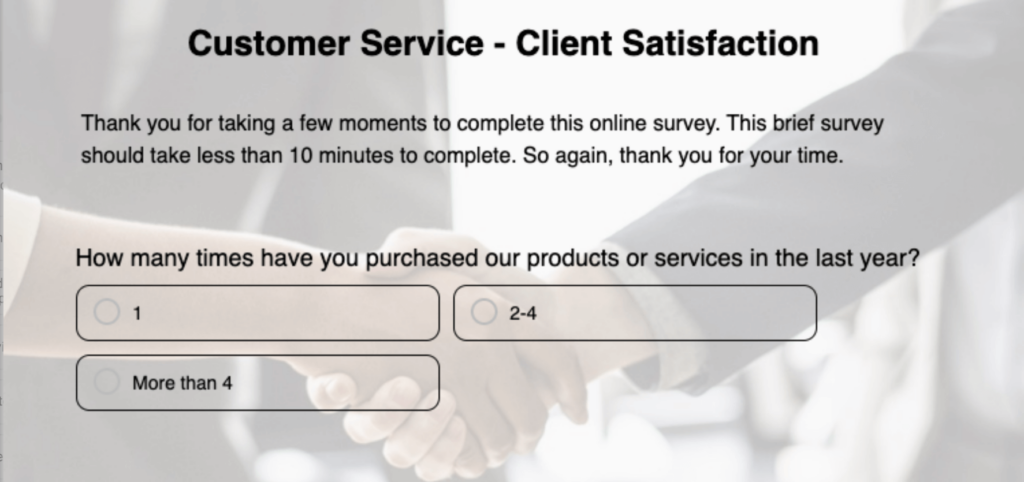
16. Information Technology
This template targets users’ satisfaction with IT services, including helpdesk support, system reliability, software usability, and overall IT infrastructure.
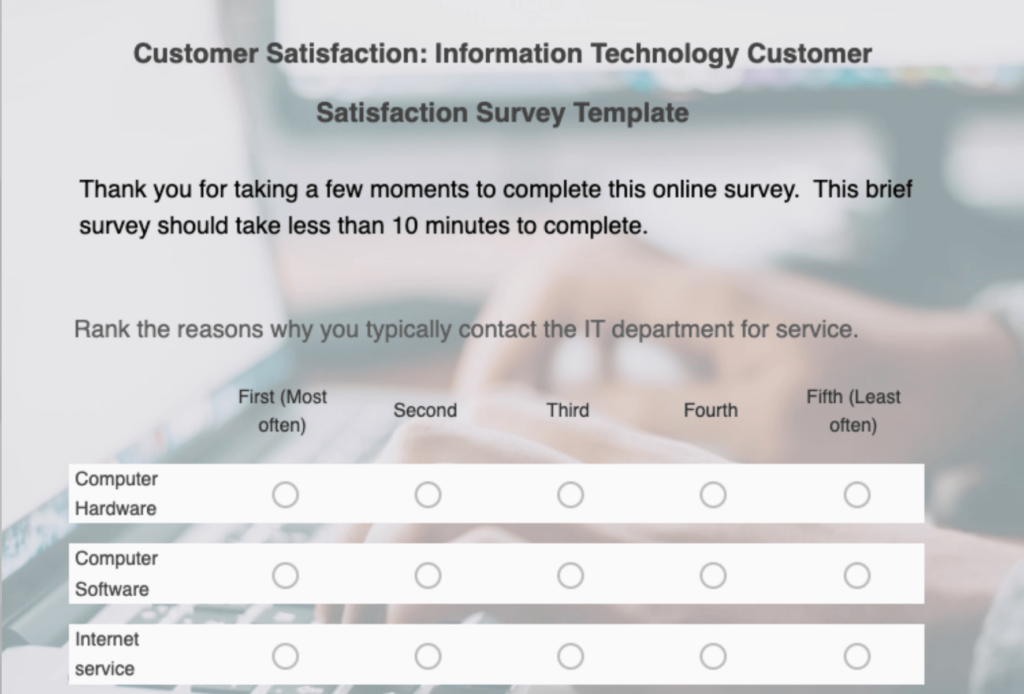
17. Customer Loyalty
Questions in this focus on understanding factors influencing customer loyalty and retention. It may include questions about brand perception, likelihood of repeat purchases, and reasons for staying loyal to a company.
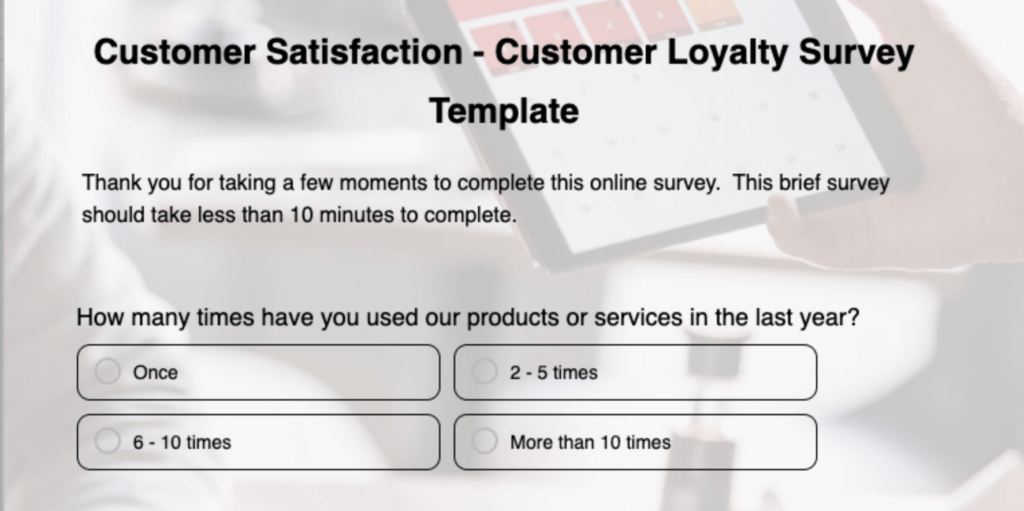
18. Catering Survey
This template collects feedback from customers who have used catering services, covering aspects such as food quality, presentation, delivery timeliness, and overall satisfaction with the catering experience.
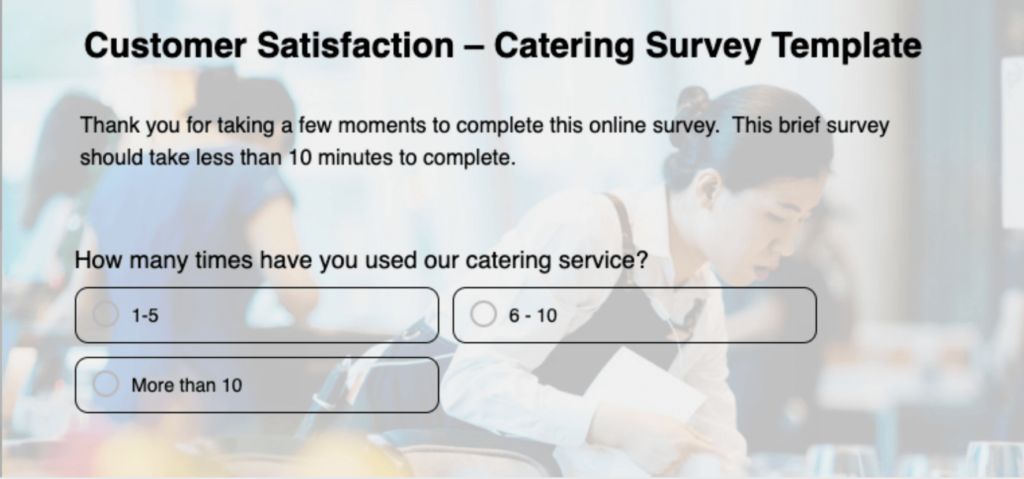
19. Service Cancellation
This aims to understand the reasons behind customers’ decisions to cancel services or subscriptions. It may include questions about dissatisfaction, pricing issues, competitor offerings, or changes in needs.
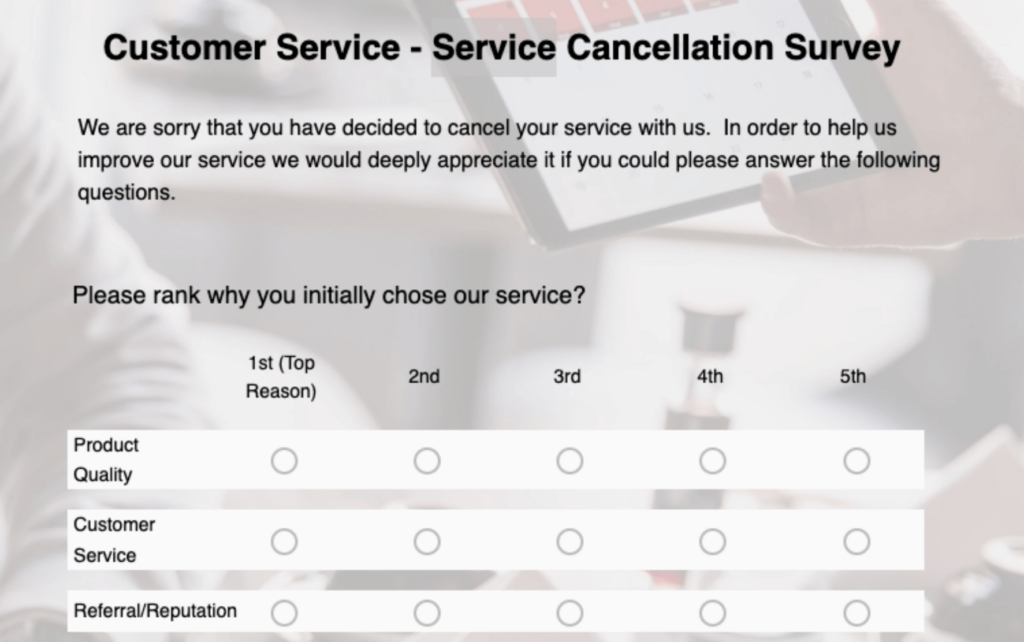
20. Retail Customer
The retail customer satisfaction survey template is designed to provide retailers with a direct line to customer insights, enabling you to enhance your service, product offerings, and overall shopping experience.
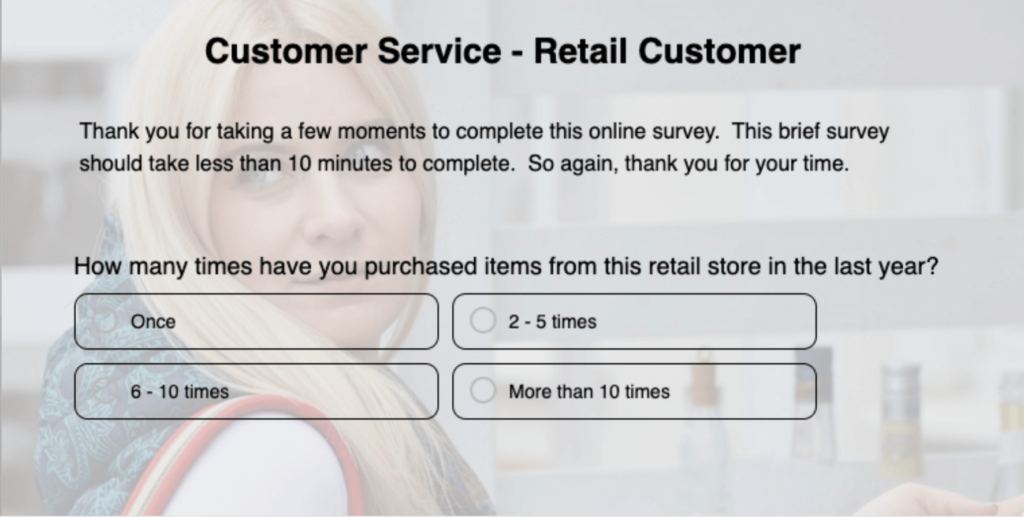
21. Real Estate
The real estate customer satisfaction survey template is expertly crafted to help realtors, property managers, and real estate agencies gather valuable feedback on their service, communication, and overall client satisfaction throughout the buying, selling, or renting process.
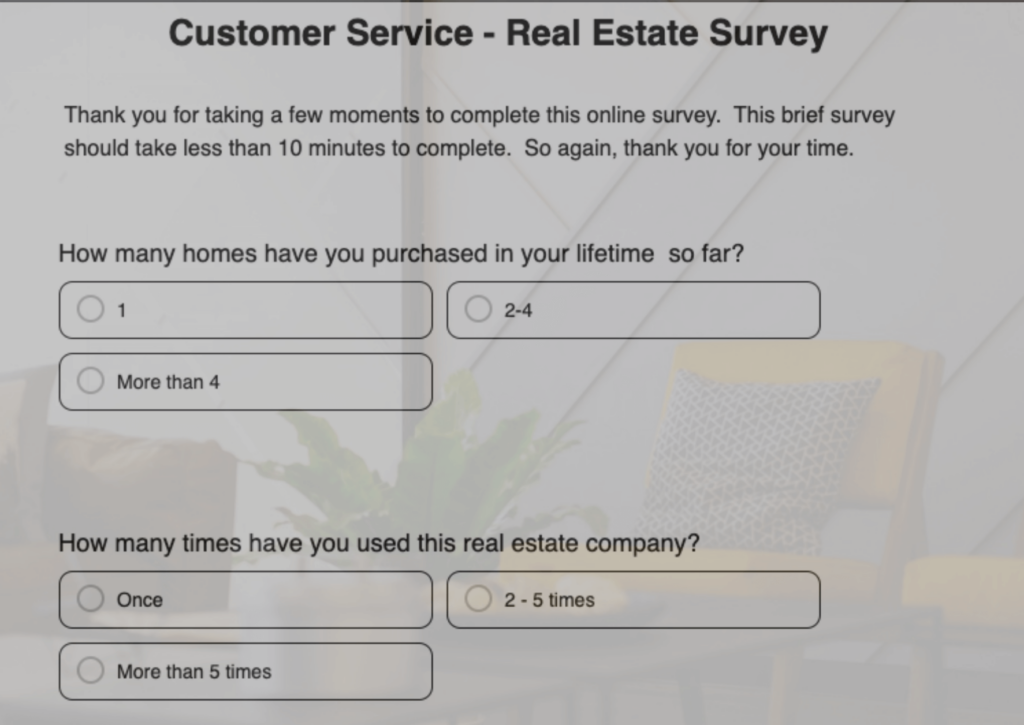
22. Airline Survey
This survey assesses passengers’ satisfaction with airline services, including check-in procedures, onboard experience, seat comfort, flight punctuality, baggage handling, and overall satisfaction with the airline.
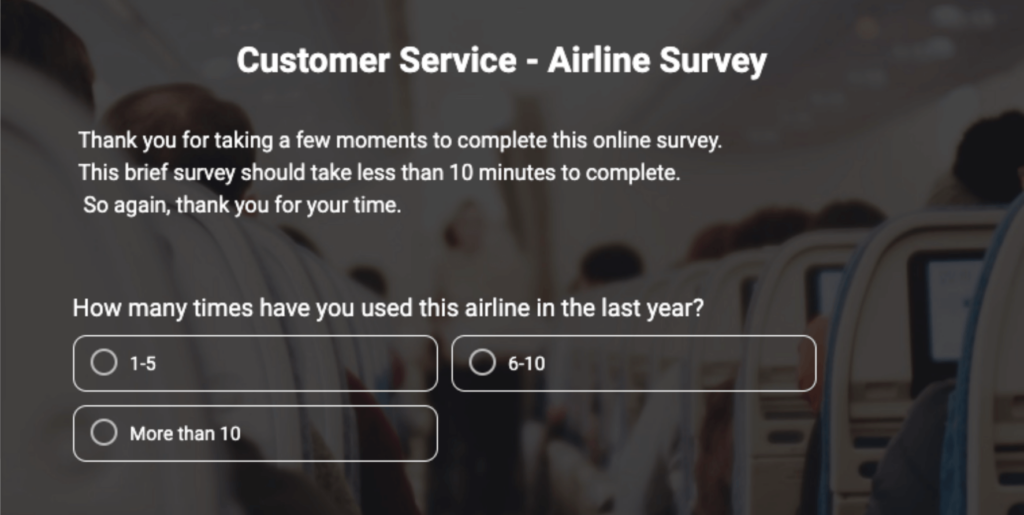
Strive to Achieve Customer Delight – One Question at a Time
As a business that’s constantly evolving, your ultimate goal should be to achieve customer delight.
With customers becoming smart, you’ve to be smarter and stay one step ahead. That’s how you will gain the competence to build the experiences your customers seek.
Asking the right customer satisfaction survey questions can put you on the right track. They help you glean useful insights into your customers’ likes, dislikes, pain points, and even the things that make them happy.
Before you share surveys, be clear about your objective and base your survey on that goal. Ask the right questions, choose the right timing, and ensure that your survey is aligned with the customers’ journey.
Doing these simple things right will significantly up your survey response rate and introduce you to insights that can bring positive changes in the way you serve your customers.
Learn More Customer Satisfaction Surveys Questions
How to calculate CSAT?
CSAT score is calculated by dividing the number of satisfied customers (those who responded with the top scores, typically 4 and 5 on a 5-point scale) by the total number of respondents, then multiplying by 100 to get a percentage. The formula looks like this: (Number of Satisfied Customers / Total Number of Respondents) x 100.
How to build good customer satisfaction surveys?
To build effective customer satisfaction surveys, start with clear, specific goals. Use a mix of question types (e.g., rating scales, multiple choice, open-ended) for depth. Keep it concise to respect respondents’ time. Ensure questions are unbiased and straightforward. Test your survey before widespread deployment.
Why are customer satisfaction surveys important?
Customer satisfaction surveys are crucial because they provide direct feedback from customers about their experiences and perceptions. This feedback helps identify strengths, uncover areas for improvement, enhance customer retention, inform product development, and ultimately, drive business growth by aligning offerings with customer expectations.
How long should a customer satisfaction survey be?
A customer satisfaction survey should be as brief as possible while still gathering the necessary information. Ideally, it should take no longer than 5 to 10 minutes to complete, which usually translates to about 5-10 questions. Keeping surveys short ensures higher completion rates and more accurate feedback.
When should you send a survey to your customers?
The best time to send a survey depends on the context of the interaction and your goals. After purchase or service delivery, surveys should be sent promptly while the experience is fresh in the customer’s mind, typically within 24-48 hours. For general feedback or periodic assessments, timing can be more flexible, but consider customer convenience and potential time zones if applicable.
Do you want a free Survey Software?
We have the #1 Online Survey Maker Software to get actionable user insights.


